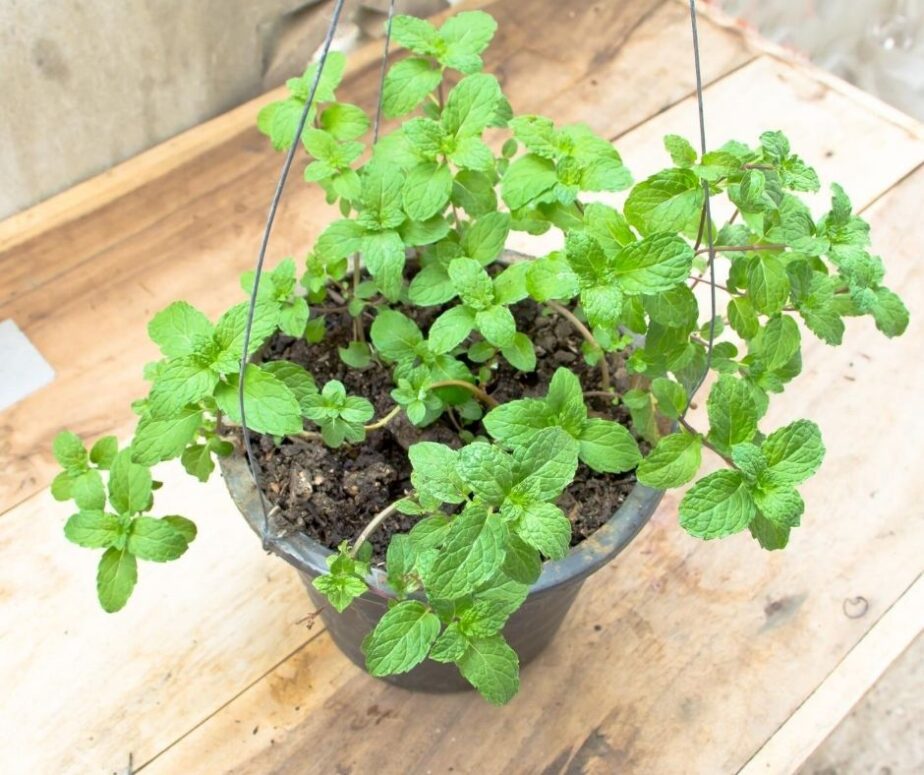Herbs are healthy and aromatic, and most of them are easy to grow indoors. All you need to do is put them in plenty of sunlight – they need to get at least several hours a day.
Apart from sunlight, you need to plant your herbs in well-drained pots. Use a liner or saucer if you’re afraid that the drainage holes might ruin your windowsill or tabletop. This will catch any excess water. Want to learn about growing a herb that lends everything amazing flavor? Keep on reading!
1. Basil

Basil is simply the best herb to grow at home. It works perfectly in pesto, as you know, and in pizzas and salads. You can grow it from a starter plant or seed. Plant it in well-drained soil in a warm, sunny area. Pinch any flowers back. Cut several stems right above where two leaves come together to harvest.
2. Cilantro
Cilantro has a limited root system range, so to grow it indoors, it needs more nutrition. If you decide to grow this herb indoors, the soil should be a mixture of sand and potting soil so water can flow freely.
Cilantro planted indoors will always grow less abundantly than outside. With added attention to soil mixture, sun exposure, moisture, and gentle harvesting, you will have a delicious, aromatic herb all through the year.
3. Parsley
Parsley can be added to any dish – grilled meat as parsley butter, garnish, to soup, fresh sauces, salads, and more. Keep it in sunlight in lightly moistened soil. You can choose between flat-leaf or curly.
Parsley is the main ingredient in tabbouleh. It’s amazing with fish, chicken, and vegetable dishes. To use separate leaves, pinch the stems off near the base. Grow in organic soil in a deep pot in strong light.
4. Dill

Dill lends every dish it’s in an amazing flavor. Its strong, intense aroma has made it an important cooking ingredient with its leaves and seeds used in many dishes. When planted from seed, dill grows best.
You can buy seeds in several varieties, each with unique characteristics and properties. The most common type of dill is bouquet, used mainly for pickling, but it works well in any recipe calling for either seeds or dill leaves.
5. Green Onions

Green onions are something most people eat every day. They are in very high demand, which makes them great to grow. They are very persistent: they sprout, regrow, sprout, regrow, over and over again.
To grow them, place a small whole onion (or a piece, or the root) in a pot in potting soil. In time, it will grow. Repeat the process as often as you want when it has developed.
6. Sorrel
You can grow sorrel from seeds started in early spring indoors or buy a plant. Once it’s caught hold, one or two plants will grow into a patch. There will then be plenty of sorrel for you and your loved ones.
Sorrel is planted around the last frost date of spring in well-drained, fertile soil. Sorrel is a hardy plant that never fails to return. Both French sorrel and garden sorrel have a unique lemony flavor applauded in sorrel soup and light salads.
7. Mint

Mint not only makes amazing tea, but it’s also very refreshing in ice cream, candy, and many other desserts. When planted outdoors, mint runs wild, so it’s an obvious choice for indoor growing. Mint needs plenty of water and rich, moist soil.
You can devote a whole garden to it with so many varieties: orange, chocolate, spearmint, peppermint, banana, apple, etc. Snip springs and leaves for salads, sweets, or tea and mixed drinks.
8. Rosemary

This hardy, shrub-like herb does great in indoor conditions. Snip a few stems to add a zesty piney flavor to your dishes. The herb is easy to dry, so you’ll never have to buy it again.
The needled leaves are an excellent addition to lamb, chicken, olive oil, soup, or pork. It’s also delicious in cream sauces and tomato.
9. Chives
You’ll never be overcharged at the grocery store for chives again. Growing them indoors is child’s play. Sow the seeds in a pot with plenty of sunlight and keep a tray of water and pebbles under the pot for additional moisture.
The onion-tinged taste is welcome for any dish, especially dishes containing eggs or meat, and the herb works well in soups and salads. To cut separate leaves off, use scissors and trim now and then to keep the floppy leaves tidy.
10. Chervil

This herb has a taste of parsley combined with anise. It pairs well with potatoes, fish, eggs, and steamed carrots. You can add fresh leaves at the end of cooking to sustain the aroma or use them in salads. They can be steeped for dressing in white wine vinegar.
The seeds should be planted in deep pots so their tap roots have room to grow. After they sprout, do not keep them in temperature over 70 degrees F. Moderate sunlight is best for them. To keep enough fresh leaves on hand, replant every few weeks.

